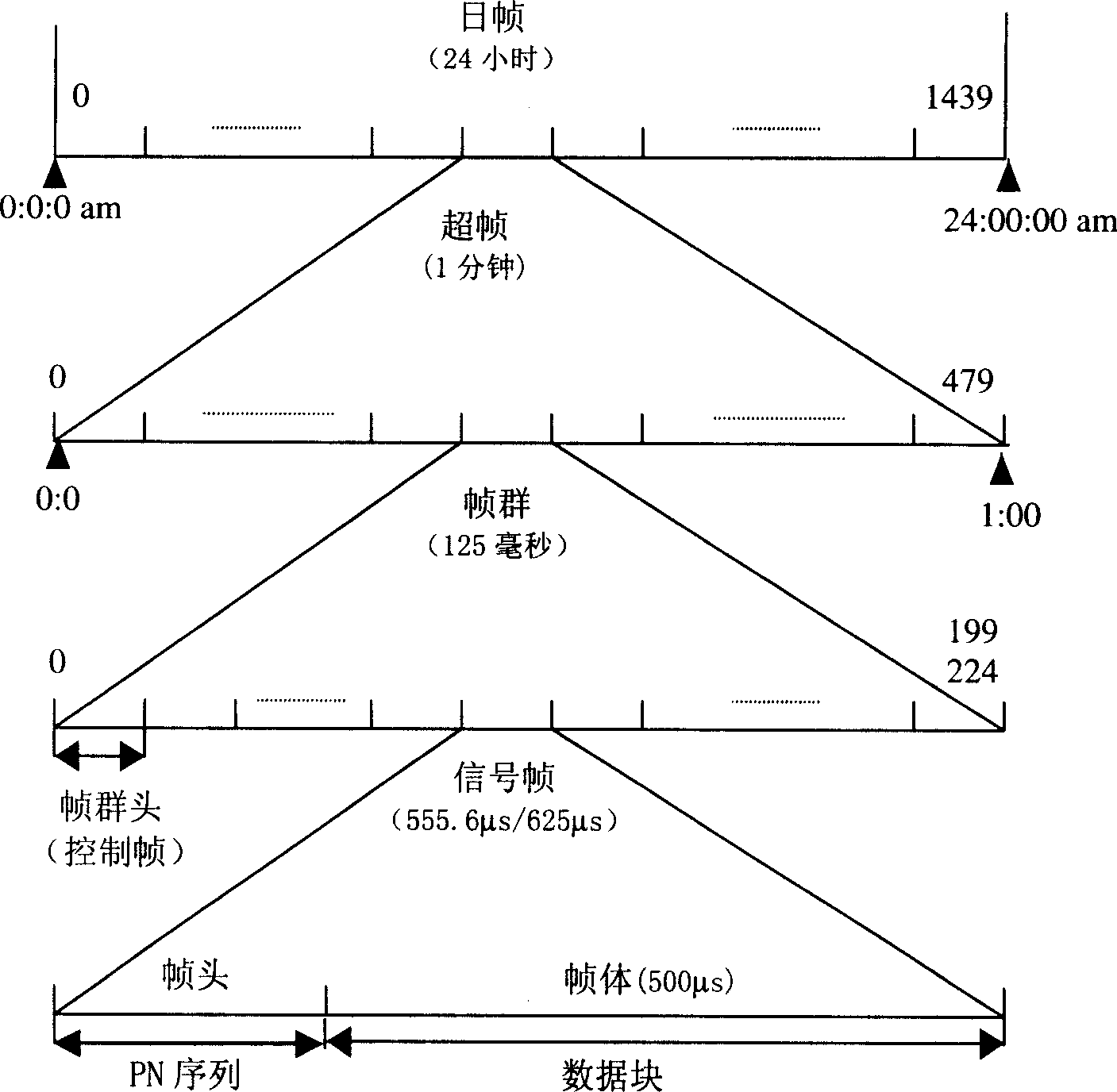Emission diversity method for time-domain orthogonal frequency dividing duplexing system
An orthogonal frequency division and time domain synchronization technology, applied in the field of digital information transmission, can solve the problems of frequency selective fading channel inapplicability, channel assumption error, etc.
- Summary
- Abstract
- Description
- Claims
- Application Information
AI Technical Summary
Problems solved by technology
Method used
Image
Examples
Embodiment Construction
[0132] See Figure 4 . The frequency-domain input sequence in this system is a complex signal after modulation mapping (constellation map mapping), which can be a non-coded signal or a coded signal. The input sequence in the frequency domain is first divided into odd subsequences and even subsequences according to subcarrier numbers, and their lengths are both N / 2. Then, a total of four N / 2 long subsequences of two consecutive frames of input data are respectively subjected to N / 2 point inverse discrete Fourier transform, and the result x 1 to (n, l), x 1 te (n, l), x 1 to (n, l+1) and x 1 te (n, l+1) is stored in the cache and stored in the cache. Using the operational properties of the inverse discrete Fourier transform, simple complex multiplication and addition calculations are performed on the data in the cache in the following four cases to obtain the time domain signals of the four transmission links:
[0133] 1) For antenna Tx1:
[0134] ...
PUM
 Login to View More
Login to View More Abstract
Description
Claims
Application Information
 Login to View More
Login to View More - R&D
- Intellectual Property
- Life Sciences
- Materials
- Tech Scout
- Unparalleled Data Quality
- Higher Quality Content
- 60% Fewer Hallucinations
Browse by: Latest US Patents, China's latest patents, Technical Efficacy Thesaurus, Application Domain, Technology Topic, Popular Technical Reports.
© 2025 PatSnap. All rights reserved.Legal|Privacy policy|Modern Slavery Act Transparency Statement|Sitemap|About US| Contact US: help@patsnap.com



